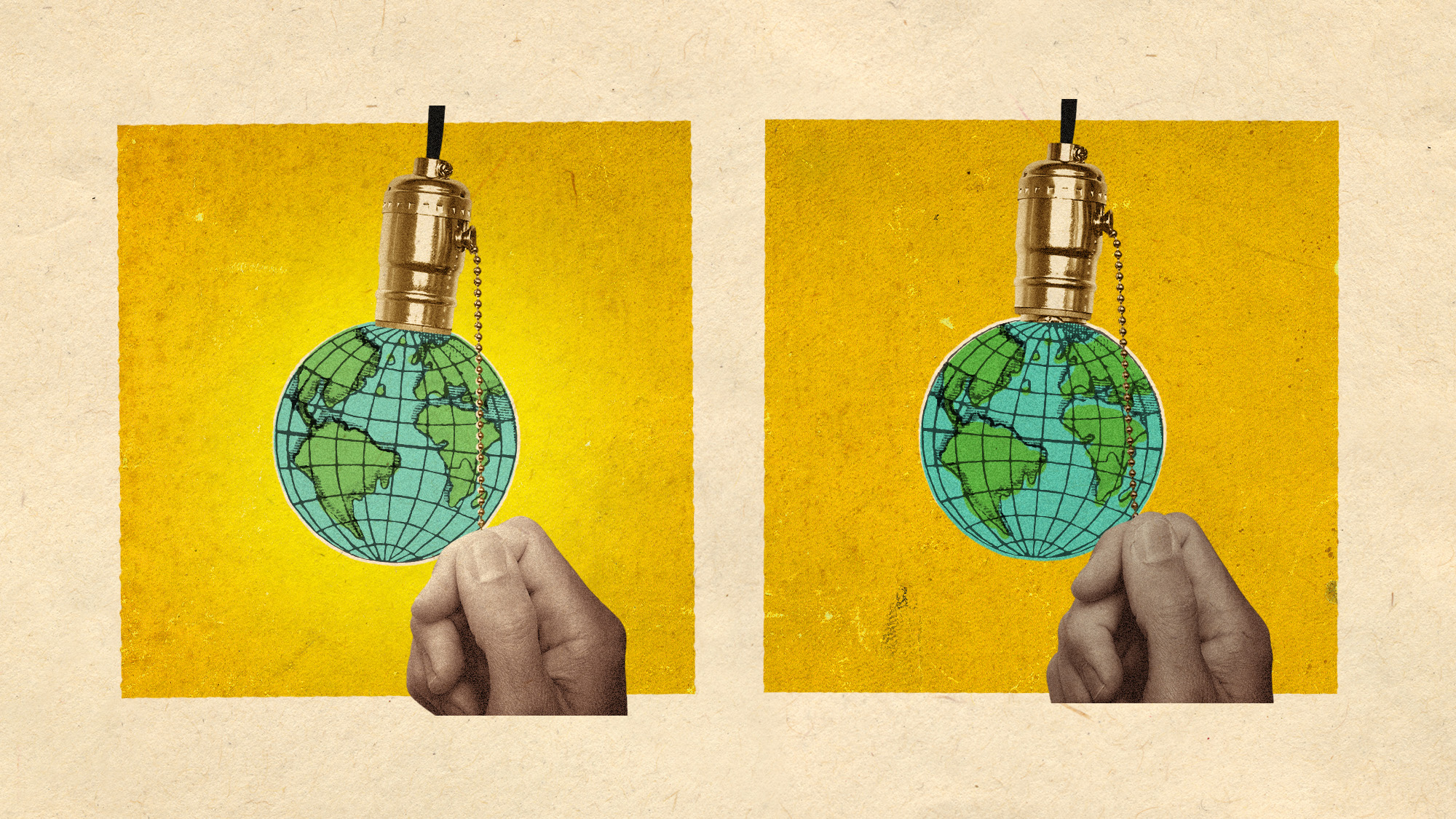The Earth is getting darker
The planet’s reflectivity is out of whack


We’re going dark. The Earth is reflecting less light than it used to, especially the Northern Hemisphere. While climate change is to blame, the reverse is also true: the planet being darker — and absorbing light instead of reflecting it — is in turn worsening climate change. But scientists are still unsure exactly how the change in Earth’s reflectivity will affect our planet’s future.
A light problem
Climate change is darkening the Earth, according to a study published in the journal PNAS. Data from NASA’s Clouds and the Earth’s Radiant Energy System (CERES) satellites found that the planet is reflecting much less light into space than it did two decades ago. In addition, while both sides of the planet should be receiving and reflecting equal amounts of sunlight, Earth’s Northern Hemisphere (NH) is reflecting less than the Southern Hemisphere (SH), thus retaining more heat and appearing dimmer.
This affects the Earth’s radiation budget, which is the “amount of light the planet absorbs and re-emits into space as outgoing longwave radiation,” said Popular Mechanics. Any imbalance between the NH and SH is typically “offset by the oceanic currents that transport energy from the southern hemisphere to the northern hemisphere.” But this research suggests that “surface changes have tipped the balance so much that ocean currents haven’t been making up the difference for the past two decades.”
The Week
Escape your echo chamber. Get the facts behind the news, plus analysis from multiple perspectives.

Sign up for The Week's Free Newsletters
From our morning news briefing to a weekly Good News Newsletter, get the best of The Week delivered directly to your inbox.
From our morning news briefing to a weekly Good News Newsletter, get the best of The Week delivered directly to your inbox.
Along with the NH dimming and warming more than the SH, the “NH tropics are getting wetter, which suggests changes in large-scale atmospheric circulation are occurring,” said the study.
A dim future
The reason for this phenomenon, like most environmental problems, is climate change. Melting Arctic ice and reduced snow cover are actively dimming the glow of the planet. The NH “used to be so snowy that all that white was bouncing tons of light back into space,” said Vice. Temperatures have increased, melting the snow cover and “exposing these darker surfaces that absorb more sunlight instead of reflecting it,” said the BBC.
Changes in cloud formation have also contributed to the dimming Earth. Low-lying clouds “decreased in recent decades,” said Popular Mechanics. Ironically, this may be because we have been polluting less than we used to. In the NH, “stricter environmental regulations have reduced aerosol pollution, which previously reflected sunlight,” said the BBC. So, while the air has been cleaner, it has also incurred an unintended consequence. On the SH, “aerosol levels are increasing due to events like bushfires and volcanic eruptions, which reflect more sunlight.”
In a positive feedback loop, the Earth’s darkening is “accelerating the effects of climate change, and an asymmetric hemispheric darkening could produce its own complex impacts, including disruptive shifts in precipitation,” said 404 Media. Researchers are “watching for signs that the symmetry might reemerge in the future, or if asymmetry is perhaps the new normal.”
A free daily email with the biggest news stories of the day – and the best features from TheWeek.com
“All of this means that our planet isn’t just growing darker to outside observers,” said Vice. “Darkness is a symptom of a planet that is getting hotter. So hot that it’s essentially causing a planet-wide brownout.”
Devika Rao has worked as a staff writer at The Week since 2022, covering science, the environment, climate and business. She previously worked as a policy associate for a nonprofit organization advocating for environmental action from a business perspective.
-
 Received a gift card this holiday season? Here’s how to maximize it.
Received a gift card this holiday season? Here’s how to maximize it.The Explainer Make the most of your present
-
 ‘Lumpy skin’ protests intensify across France as farmers fight cull
‘Lumpy skin’ protests intensify across France as farmers fight cullIN THE SPOTLIGHT A bovine outbreak coupled with ongoing governmental frustrations is causing major problems for French civil society
-
 The best books of 2025
The best books of 2025The Week Recommends A deep dive into the site of a mass shooting, a new release from the author of ‘Atonement’ and more
-
 Crest falling: Mount Rainier and 4 other mountains are losing height
Crest falling: Mount Rainier and 4 other mountains are losing heightUnder the radar Its peak elevation is approximately 20 feet lower than it once was
-
 Death toll from Southeast Asia storms tops 1,000
Death toll from Southeast Asia storms tops 1,000speed read Catastrophic floods and landslides have struck Sri Lanka, Indonesia, Thailand and Malaysia
-
 Can for-profit geoengineering put a pause on climate change?
Can for-profit geoengineering put a pause on climate change?In the Spotlight Stardust Solutions wants to dim the sun. Scientists are worried.
-
 How will climate change affect the UK?
How will climate change affect the UK?The Explainer Met Office projections show the UK getting substantially warmer and wetter – with more extreme weather events
-
 Can the UK do more on climate change?
Can the UK do more on climate change?Today's Big Question Labour has shown leadership in the face of fraying international consensus, but must show the public their green mission is ‘a net benefit, not a net cost’
-
 Did Cop30 fulfil its promise to Indigenous Brazilians?
Did Cop30 fulfil its promise to Indigenous Brazilians?Today’s Big Question Brazilian president approves 10 new protected territories, following ‘unprecedented’ Indigenous presence at conference, both as delegates and protesters
-
 Can the world adapt to climate change?
Can the world adapt to climate change?Today's Big Question As the world gets hotter, COP30 leaders consider resilience efforts
-
 Taps could run dry in drought-stricken Tehran
Taps could run dry in drought-stricken TehranUnder the Radar President warns that unless rationing eases water crisis, citizens may have to evacuate the capital
